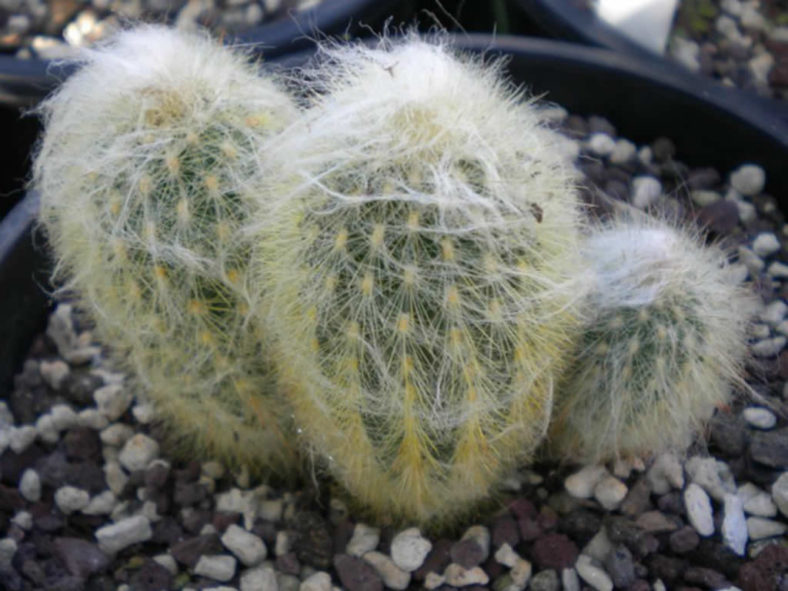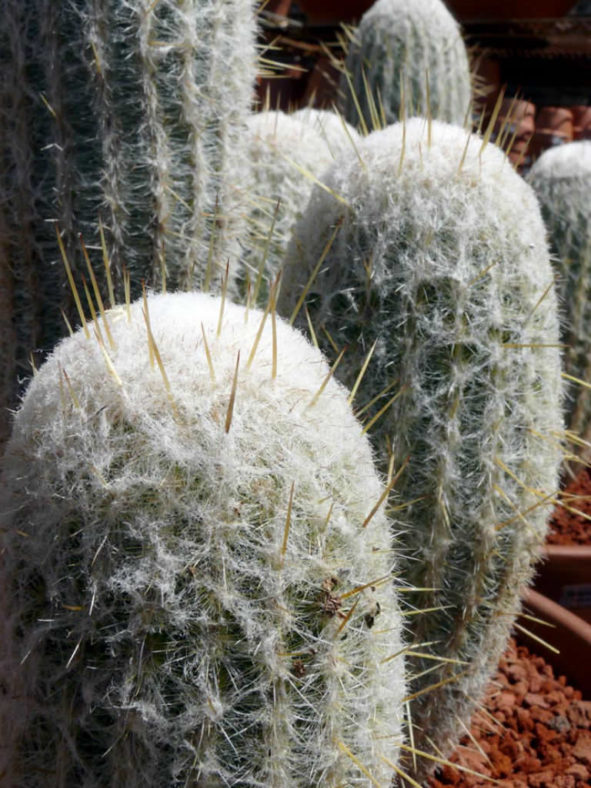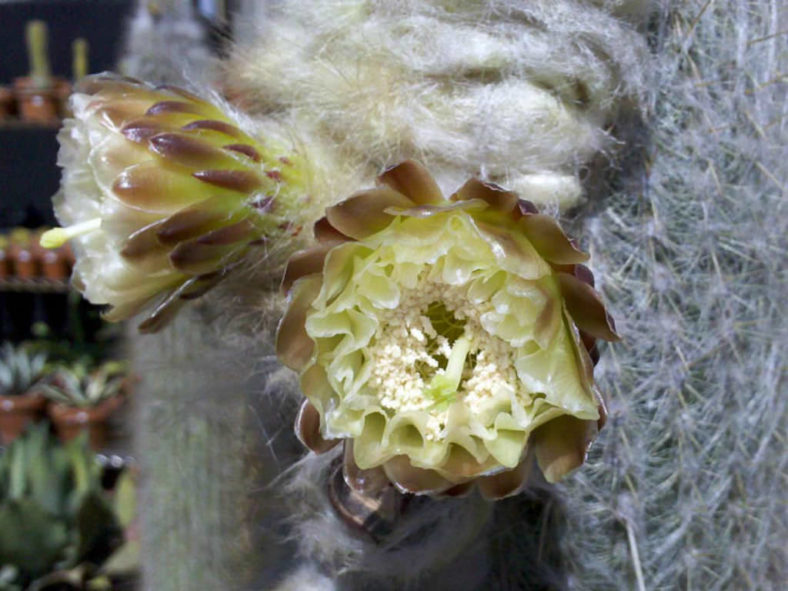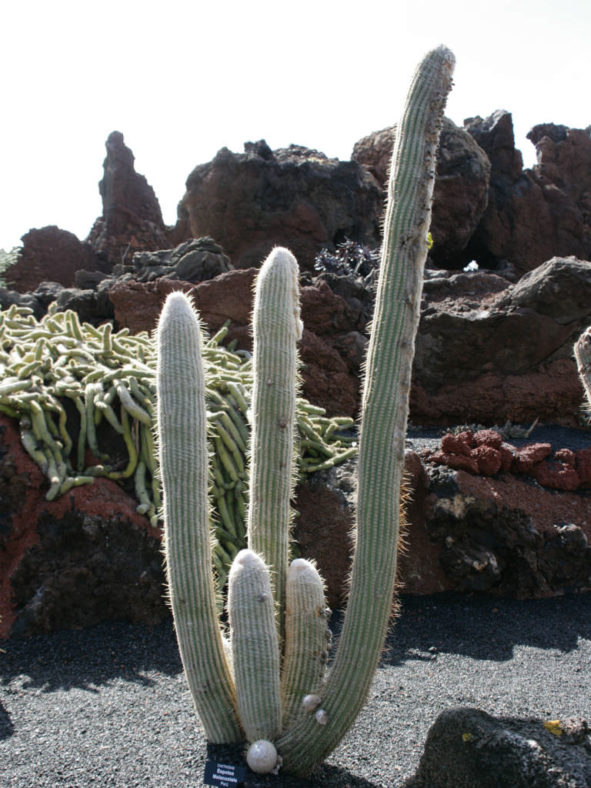Scientific Name
Espostoa melanostele (Vaupel) Borg
Common Name(s)
Peruvian Old Lady
Synonym(s)
Binghamia melanostele, Cephalocereus melanostele, Cereus melanostele, Echinopsis melanostele, Espostoa melanostele subsp. melanostele, Pseudoespostoa melanostele
Scientific Classification
Family: Cactaceae
Subfamily: Cactoideae
Tribe: Trichocereeae
Genus: Espostoa
Origin
Espostoa melanostele is native to mountainous Peru. It grows at elevations between 4,000 and 7,000 feet (1,220 and 2,130 m).
Description
Espostoa melanostele is a slow-growing columnar cactus with stems densely covered with white wool hiding the body, including sharp yellow spines that become darker with age. The stems grow up to 7 feet (2.1 m) tall, branching from the base to form a clump. They are erect, cylindrical, with 18 to 25 ribs, and up to 4 inches (10 cm) in diameter. Raised in a pot, the stems will reach only about 10 inches (25 cm) in 10 years. The spines are needle-like and up to 0.4 inches (1 cm) long. Each areole bears 40 to 50 radial and 1 to 3 central spines.
The flowers are nocturnal, white, bell-shaped, up to 2.4 inches (6 cm) long, up to 2 inches (5 cm) in diameter, and appear in whitish, yellow, or brown lateral cephalium in late spring and early summer. They close in rainstorms and reopen when dry. The edible fruits are berry-like, greenish-white to reddish, with dull black seeds inside.

Hardiness
USDA hardiness zones 9b to 11b: from 25 °F (−3.9 °C) to 50 °F (+10 °C).
How to Grow and Care
Several species of Espostoa are especially popular in cultivation due to their fuzzy white hairy appearance. The plants are typically sold by large commercial growers as up to 12 inches (30 cm) stems. However, being large columnar species, these plants do not grow nearly as vigorously in pots as they would in the ground. Plants tend to fill the pots, quickly becoming pot-bound, and then growth slows to a crawl. These plants rarely, if ever, reach maturity, meaning they don't produce the cephalium and subsequently do not flower. On the other hand, those in warmer climates who can plant the species directly in the ground may indeed have plants that form a nice grouping of stems that will eventually flower.
Like all cacti, Espostoa requires a sunny location and well-drained soil. But in summer, it appreciates fertilizer and wetter conditions. In winter, it needs a rest, but the temperature must not drop below 54 °F (12 °C).
See more at How to Grow and Care for Espostoa.
Links
- Back to genus Espostoa
- Succupedia: Browse succulents by Scientific Name, Common Name, Genus, Family, USDA Hardiness Zone, Origin, or cacti by Genus
Photo Gallery
Click on a photo to see a larger version.


